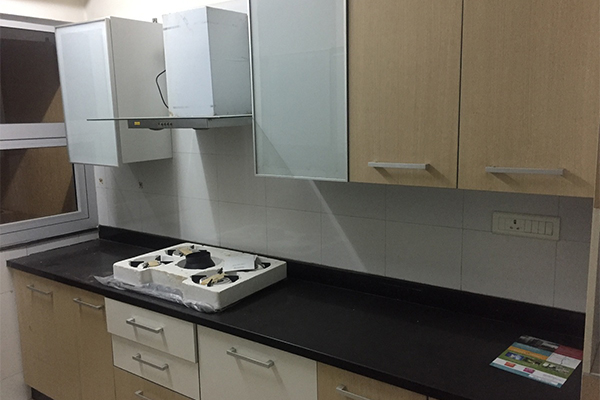
- June 8, 2023
- News
What Does Construction Development Length Mean?
Construction Development Length – To obtain the necessary bond strength between the steel and concrete, a column must have a certain quantity of reinforcement implanted in it. As it aids in preventing joint slippage, it is essential to a structure’s stability. The amount of development time needed in a certain situation depends on a number of variables, including the steel coating and concrete density.
Are you searching for new projects in Goregaon?
Construction is a labor-intensive, intricate process that requires careful attention to numerous technical issues. Development length is one such element that is crucial to maintaining the durability and stability of any construction. It also forms a secure bond between the concrete & bar surface to prevent structural failure, hence the name “anchorage length.” An overview of the importance of development length in building is provided in this article.
What does “development length” mean?
In order to minimise slipping and ensure higher stability, the term “development length” refers to the length of the bar implanted in the concrete past a point. To smoothly transfer the surplus stress and strengthen the concrete bond, this bar must be embedded at the connection between the column footing or column beam. Instead of carrying strain, development length releases stress to fortify the structure.
Considering Development Length
Development length makes sure the reinforcing bar stays stable even under extremely high load circumstances by creating a solid bond between the concrete & bar surface. Let’s use a clear illustration to illustrate the importance of development length: Ask your companion to attempt and pry the pencil out of your closed fist. If you hold a shorter length of the pencil in your fist, your friend will find it simpler to remove it.
To ensure that the bar does not give way under tension, there must be a minimum length of bar on either side of a point of maximum stress. Therefore, development length contributes to ensuring:
- The bar is securely embedded in the concrete, reducing the chance that it will slide out.
- Instead of being focused at one location, the pressure is evenly distributed among the nearby places.
Development Length: What will happen if we don’t supply it?
A structure is vulnerable to joint slippage if it has inadequate development length or none at all. The stress does not spread to the surrounding areas without the development bars. As a result, structural collapse and joint slippage occur prior to the bars releasing their loads. In this instance, the bars begin to crack and break away from the concrete at the laps & joints.
Any additional load renders the resisting power of a beam-column joint that is missing the required development length insufficient to hold the beam in place. Eventually, the concrete cracks and the beam separates from the column.
Predicting Development Length with Accuracy
Development length (Ld) is determined in accordance with Clause 26.2.1 of Indian Standards (IS) Code 456:2000 using the following formula:
Ld = Фσs/4τbd
Where,
Is the reinforcement bar’s diameter.
s = the stress in a bar at the location taken into account during load design.
Design bond stress is bd.
Although the working stress & limit state approaches can both be used with this calculation, the value for the design bond stress varies for each.
Planning for Development length for power
To optimize development length, the following five factors must be considered:
Concrete density: Depending on whether high- or low-density concrete is used for the construction, the length of development may alter.
Concrete-encased structural steel: The length of development is inversely correlated with the thickness of the concrete cover.
Distance between steel members: The amount of concrete required to prevent horizontal shearing in the steel is directly proportional to the distance between two steel components. Steel members in beams are typically spaced one or two diameters apart. While other types of members may have a wider spacing.
Concrete’s compressive strength: The shorter the construction period required for the project, the higher the concrete’s compressive strength.
The substance used to coat steel: To stop corrosion from unfavorable weather conditions, epoxy-coated steel is employed in a number of building projects. It entails boosting the bonding power between the steel & concrete, which extends the length of the development process.
Development Length: Various circumstances
In the case of bars, columns, or variations in tension or compression, development length varies as follows:
Beams
The junctions of the beams extend the length of the applied development. Because of this, the transmission of stress between concrete and steel is good.
Tension and compression
As soon as the bars are implanted in the concrete for axial compression. The length of the compressional development is measured. On the other side, flexural compression uses tensional development length.
Columns
A column bar’s vertical penetration into the concrete footing is measured by the length of the development length in compression. In contrast, a column bar’s vertical penetration is referred to as the “development length in tension,” where the bar remains immersed in the concrete footing while flexing in accordance with the footing reinforcement.
The length of development is a crucial factor in steel design for building. The requirements for calculating the precise development length to maintain structural integrity in accordance with the type of bar and concrete employed are clearly stated in the IS regulations.
You’re looking for Projects in Bandra we have the Best Properties In Mumbai Like Ready to Move:https://navimumbaihouses.com/properties/search/bandra/
If you want daily property update details please follow us on Facebook Page / YouTube Channel / Twitter









